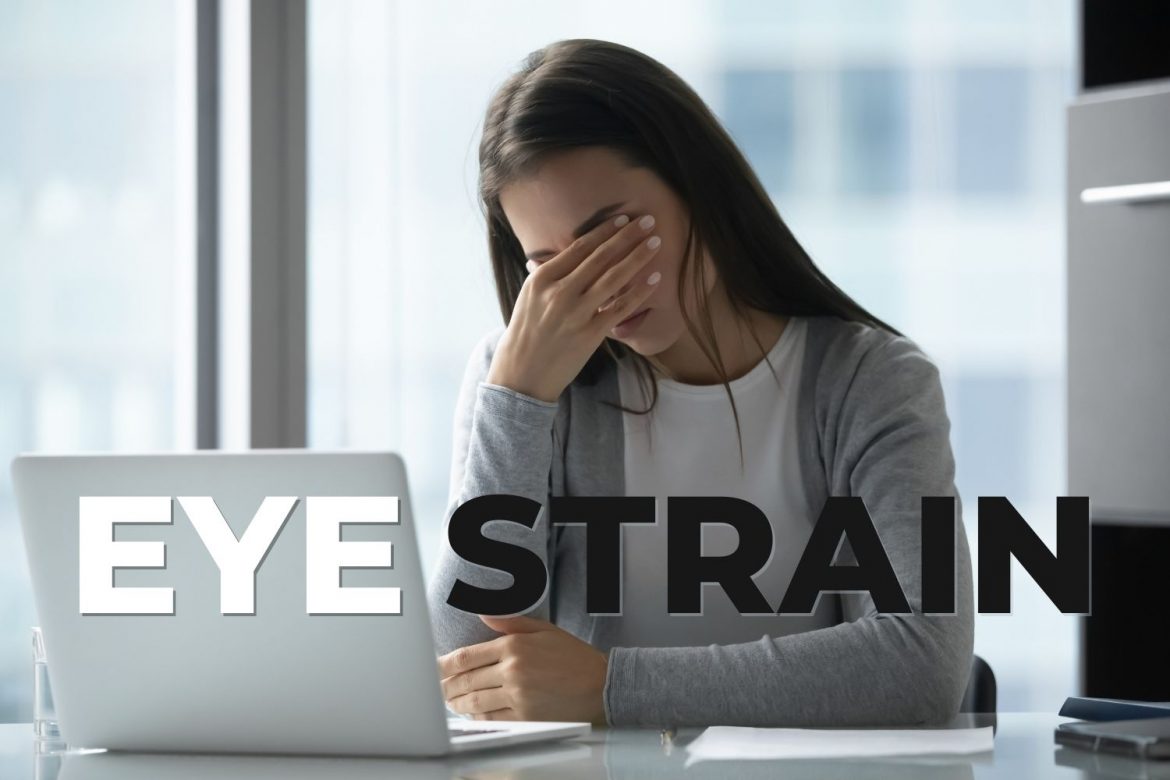1320 total views , 7 views today
Are your eyes burning, dry, or just seem to water insistently? Do you notice this happening more after work or near the end of the day?
The burning sensation that seemingly comes out of nowhere and the headaches and blurred vision that tend to follow a day spent reading, driving, or staring at a digital screen could be a sign that you need glasses or contact lenses—or it could be a sign that you are suffering from eye strain.
What is eye strain?
According to the Cleveland Clinic, eye strain is a fairly common condition resulting from prolonged and intense use of your eyes. Many people often experience eye strain after reading or driving for long periods of time. Over the last few years, more and more people are experiencing eye strain on a regular basis, a direct result of extended amounts of time spent in front of digital devices, like a computer screen, tablet, or smartphone. This increase in screen time has even led experts to coin a new term, computer vision syndrome.
Computer vision syndrome: the digital eye strain
Computer vision syndrome, also known as digital eye strain (DES), has many of the same symptoms observed in traditional eye strain, but results from the increased amount of time we spend staring at our digital screens. Over half of digital device users experience DES on a regular basis, according to the US National Library of Medicine National Institutes of Health.
What causes eye strain?
Eye strain, or asthenopia, develops as a result of prolonged and concentrated use of your eyes. For example, reading small print or working on a computer for a long period of time, or concentrating on the road while driving for hours without a break.

While engaging in these intense activities, you tend to unconsciously clench, overuse, and fatigue the muscles in your eyes and your eyelids. Many people also clench the muscles in their face, their jaw, and even their temples. As you can imagine, overusing and exhausting these muscles contributes to several of the most common symptoms associated with eye strain, including frequent headaches and blurred vision.
Interestingly, many people engaged in extended visual tasks (reading, driving, working on a computer, or sewing) also tend to focus so intently that they blink less than normal, which results in dry eyes, another key indicator of eye strain.
Other common causes of eye strain include an incorrect eyeglass prescription or needing prescription glasses to correct myopia, hyperopia, or astigmatism. Stress, lack of sleep, and certain medications (like blood pressure medications) can also contribute to symptoms of eyestrain.
What are the symptoms of eye strain?
Symptoms of eye strain often range in severity from very mild and barely noticeable to extremely painful, and in some cases, debilitating. For many, the onset of eye strain symptoms can be concerning, often leading to a fear of more serious health issues. However, eye strain symptoms that appear only after performing specific visual tasks tend to be directly a result of eye strain itself.
The most common symptoms associated with eye strain are headaches, dry eye, and blurred or double vision, according to the American Optometric Association.
Other common symptoms of eye strain include:
- Watery eyes
- Light sensitivity
- Burning sensation
- Itchy eyes
- Difficulty keeping your eyes open
In some cases of eye strain, and especially with computer vision syndrome, physical symptoms, including pain, stiffness, and discomfort in the head, neck and shoulders are also common.

How long does eye strain last?
The good news is most cases of eye strain last only until you take steps to relieve or prevent the symptoms associated with the condition.
Upon noticing the onset of symptoms associated with eyes strain, many find relief by resting their eyes, ensuring there is enough light to see properly, and ensuring they have the proper prescription for their contacts or eyeglasses.
How do you fix eye strain?
The key to fixing eye strain is identifying what’s causing the issue and taking the necessary steps to correct it. For most, simply making a point of taking periodic breaks during intense periods of eye use is enough, but that’s not the only step you should take. There are some other effective steps that you can take to prevent and/or treat eye health symptoms, including:
Follow the 20-20-20 Rule
We’re all aware of 20/20 vision, but the 20-20-20 rule, what’s that? This 20-20-20 rule is a practical, effective way of giving your eyes a break.
Every 20 minutes, take a break, find something 20 feet away, and look at it for at least 20 seconds.
Some other tips and tricks to help prevent eye strain include:
- Make a point to blink more often, or use artificial tears when your eyes are starting to feel dry.
- Use a humidifier to help keep your eyes from feeling dry and itchy.
- Make sure your computer screens are at the recommended height and distance. Screens should be kept at eye level (or slightly below) and a distance of two to three feet away.
- Increase the font size on your computer and phone.
- Avoid fluorescent light (when possible) and ensure your eyes have appropriate light for the task at hand and eliminate screen glare as much as possible.
- Schedule annual eye exams with your eye doctor to ensure there are no underlying eye health issues and your prescription glasses and contact lenses are appropriate for your needs.
Taking care of your eyes is essential for your overall health and the key to avoiding more serious vision issues in the future. While eye strain is usually treatable, it’s important to be proactive and implement the recommendations above as a way to avoid unnecessary and uncomfortable eye strain. Should you notice eye strain not going away, or progressively worsening, make sure to discuss your options with your eye doctor.


